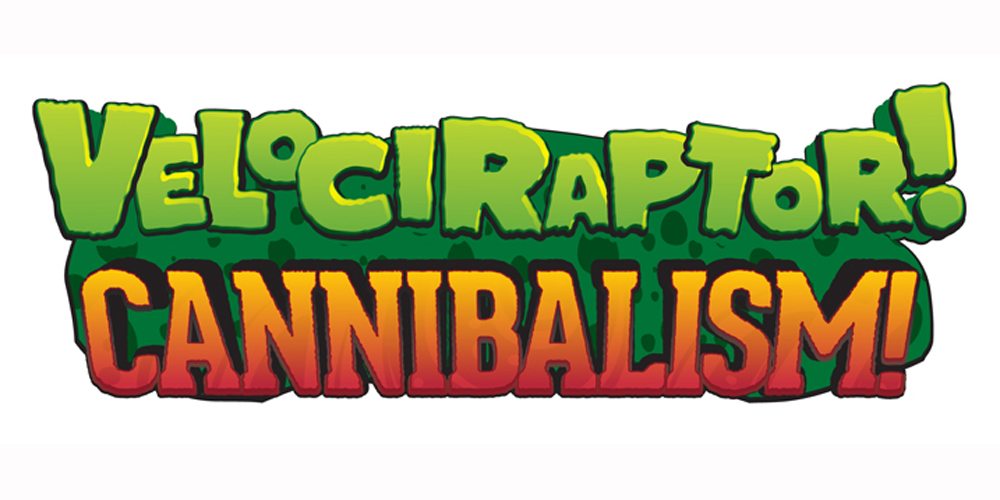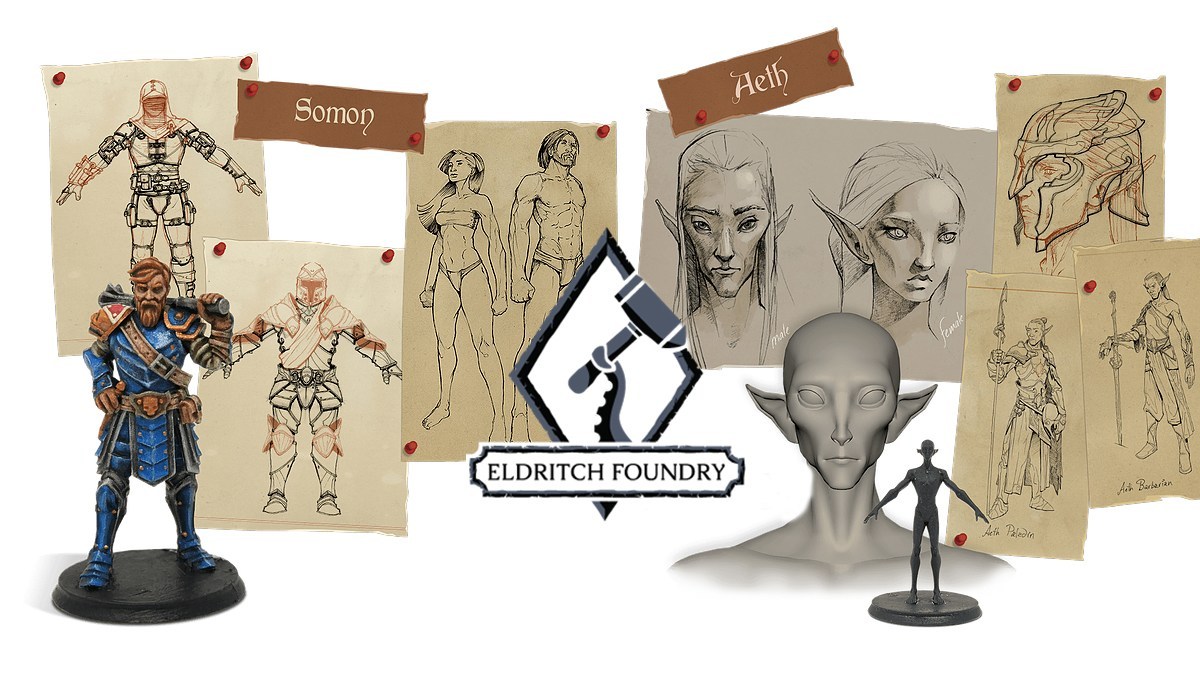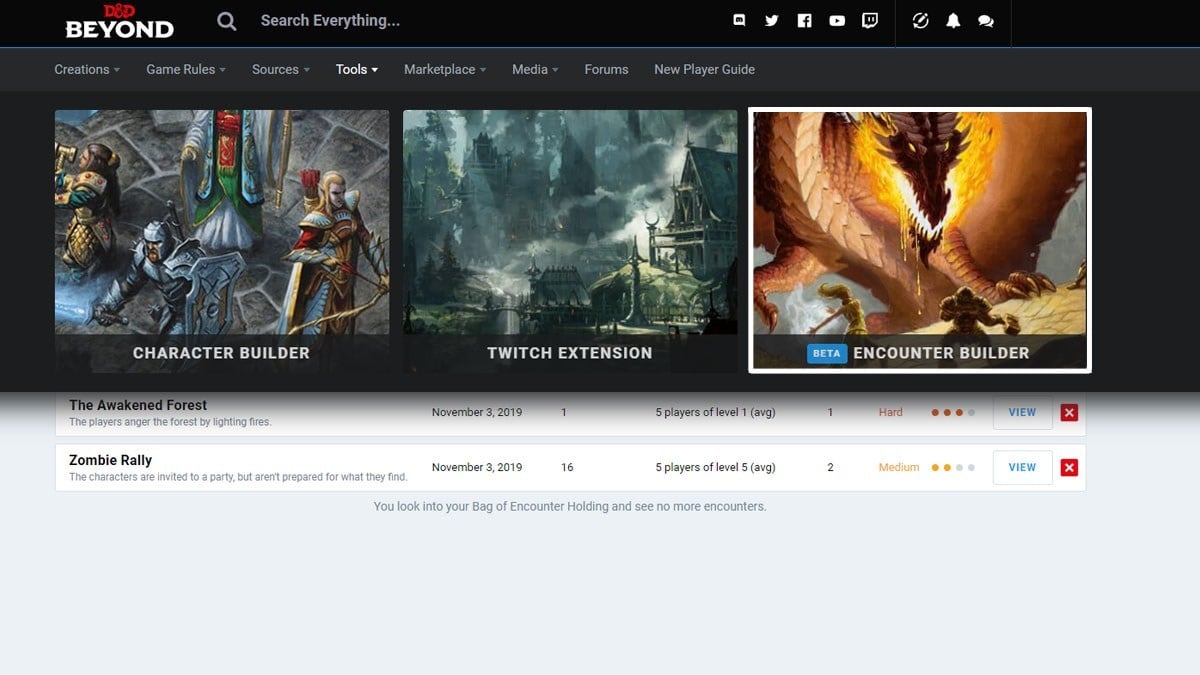Very few people know that velociraptors were capable of mutating in order to change their offensive and defensive abilities as well as their speed. It’s also not widely known that their diet consisted primarily of things like bunnies, baby seals, and cupcakes. The reason you didn’t know these things is, of course, that they aren’t actually true … unless you’re playing Velociraptor! Cannibalism!, a game which trades scientific accuracy for pseudo-scientific hilarity.
At a glance: Velociraptor! Cannibalism! is for 3 to 6 players, ages 8 and up, and takes about 45 minutes to play. The retail price is $50. (It was successfully funded on Kickstarter in 2012 and is now available for purchase.) I’ve played it with both my kids (ages 10 and 7) and adult friends—there is some pretty simple addition/subtraction involved, and there’s also a decent amount of spite, so it’s not great for sensitive souls.
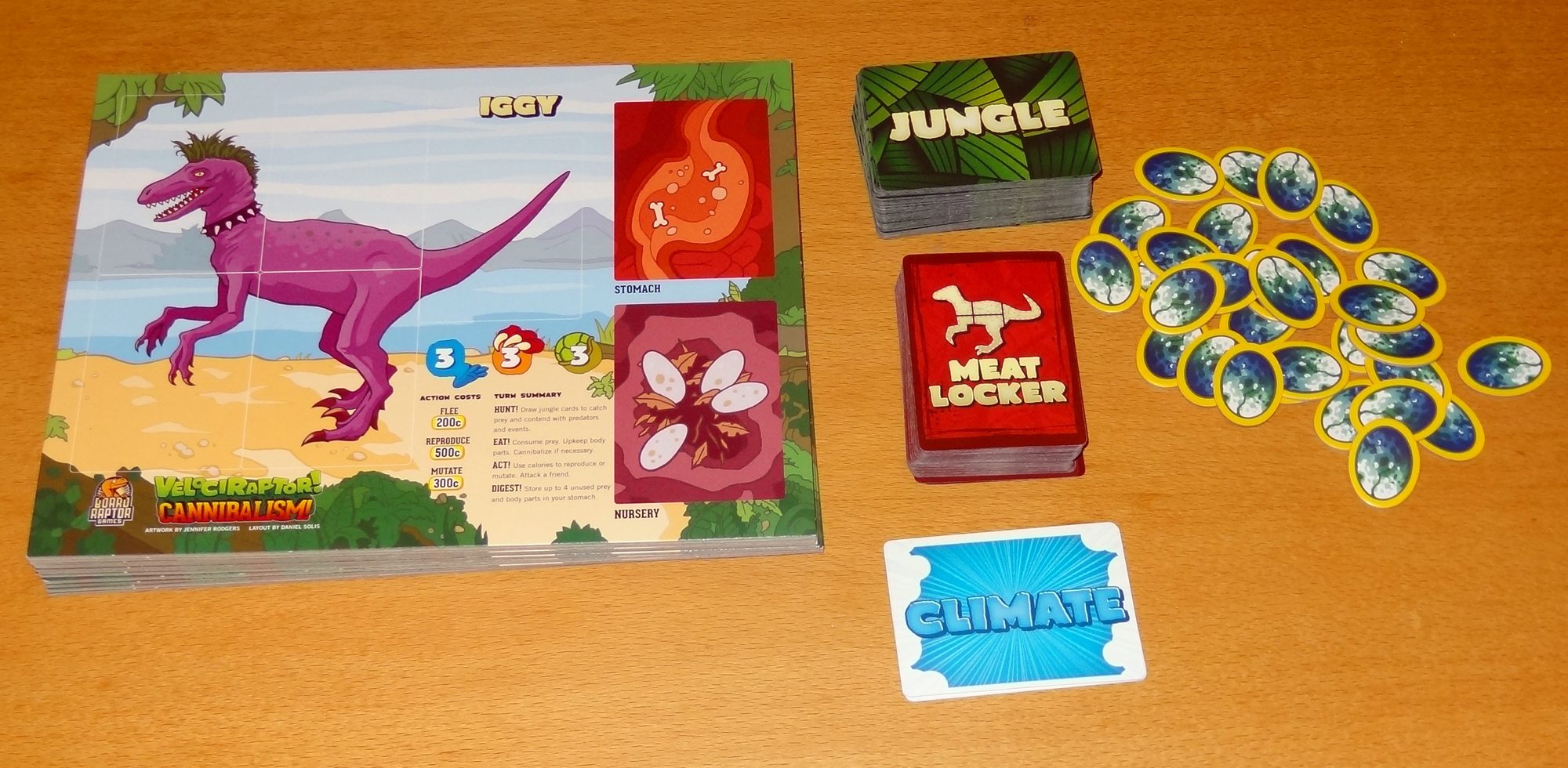
Components:
The game includes:
- 8 Player Mats
- 172 Cards (70 Meat Locker, 92 Jungle, 10 Climate)
- 30 Egg Tokens
It also has the Mythos Expansion packaged with it, which adds 4 player mats and 30 cards (10 of each type).
The quality of the components is pretty standard: the egg tokens are just little cardboard punchouts and the cards are fine. The artwork is pretty great, though, particularly on the player boards and the Meat Locker cards, which are animal parts that you can use to modify your raptor. The prey cards all have silly little taglines which can be pretty amusing, too, though with a slightly morbid sense of humor.
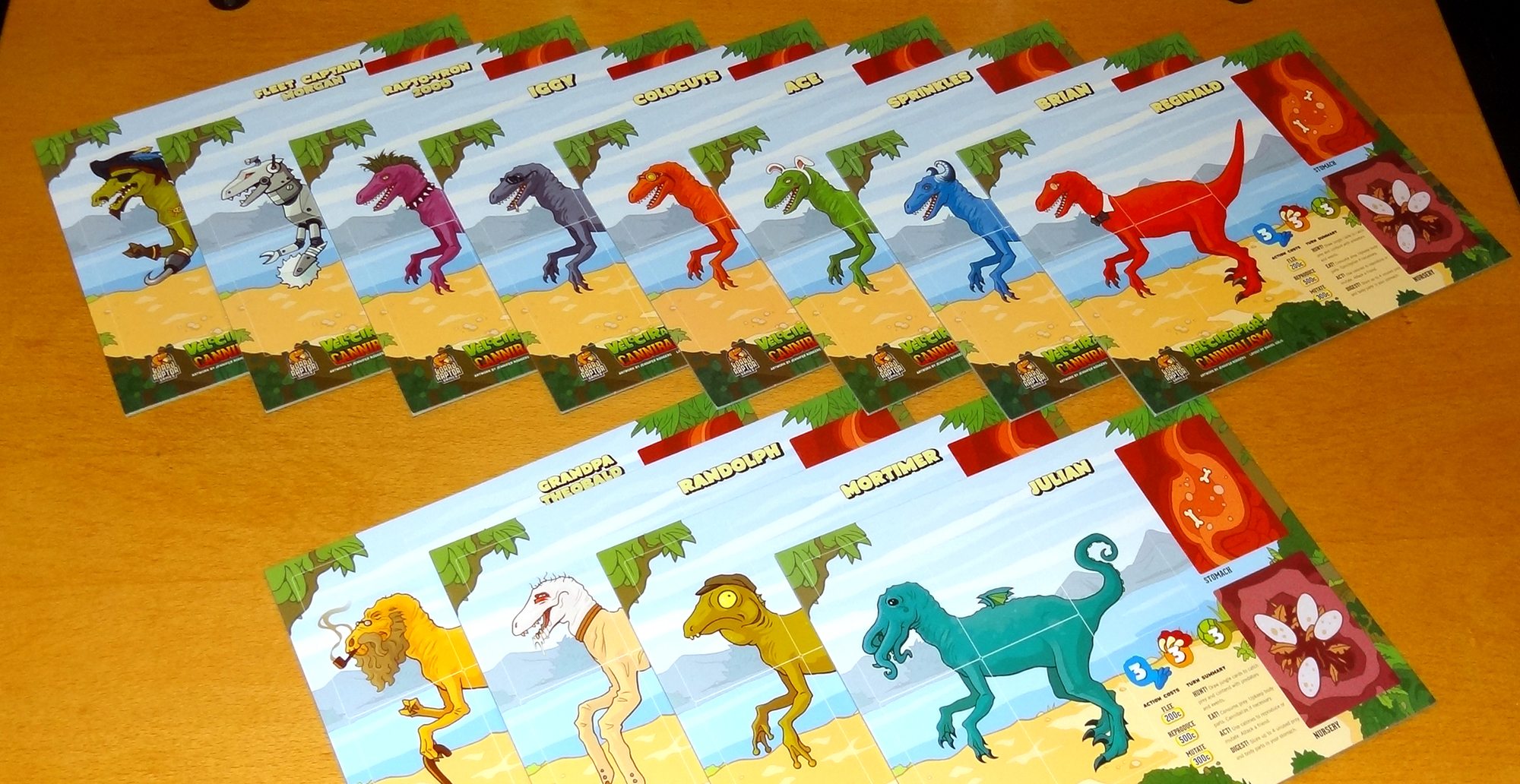
How to play
The goal of the game is to have the largest population (i.e., the most eggs) at the end of the game.
Each player gets a player mat—the raptors in the base game all have little bios in the rulebook, in case you want to know more about their personalities. Each of the three decks (Meat Locker, Jungle, Climate) is shuffled individually, though you set aside the “Truce” Climate card and place it on top for the first round. Put three egg tokens per player to form the population pool. Finally, each player gets a body part from the Meat Locker and immediately adds it to the appropriate place on their dinosaur.
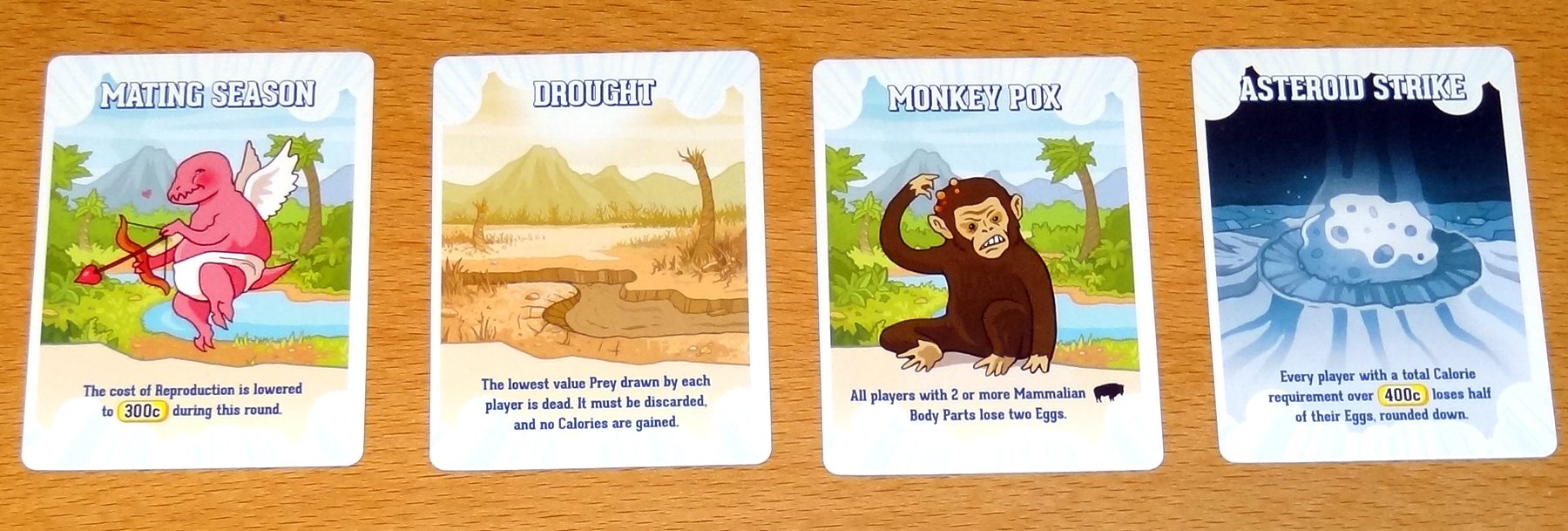
To begin each round, you’ll flip over a Climate card, which may affect any number of players. The first card is Truce, which just states that nobody can attack anyone for a round. Then in clockwise order, everyone takes a turn, which consists of Hunt, Eat, Action, and Digest.
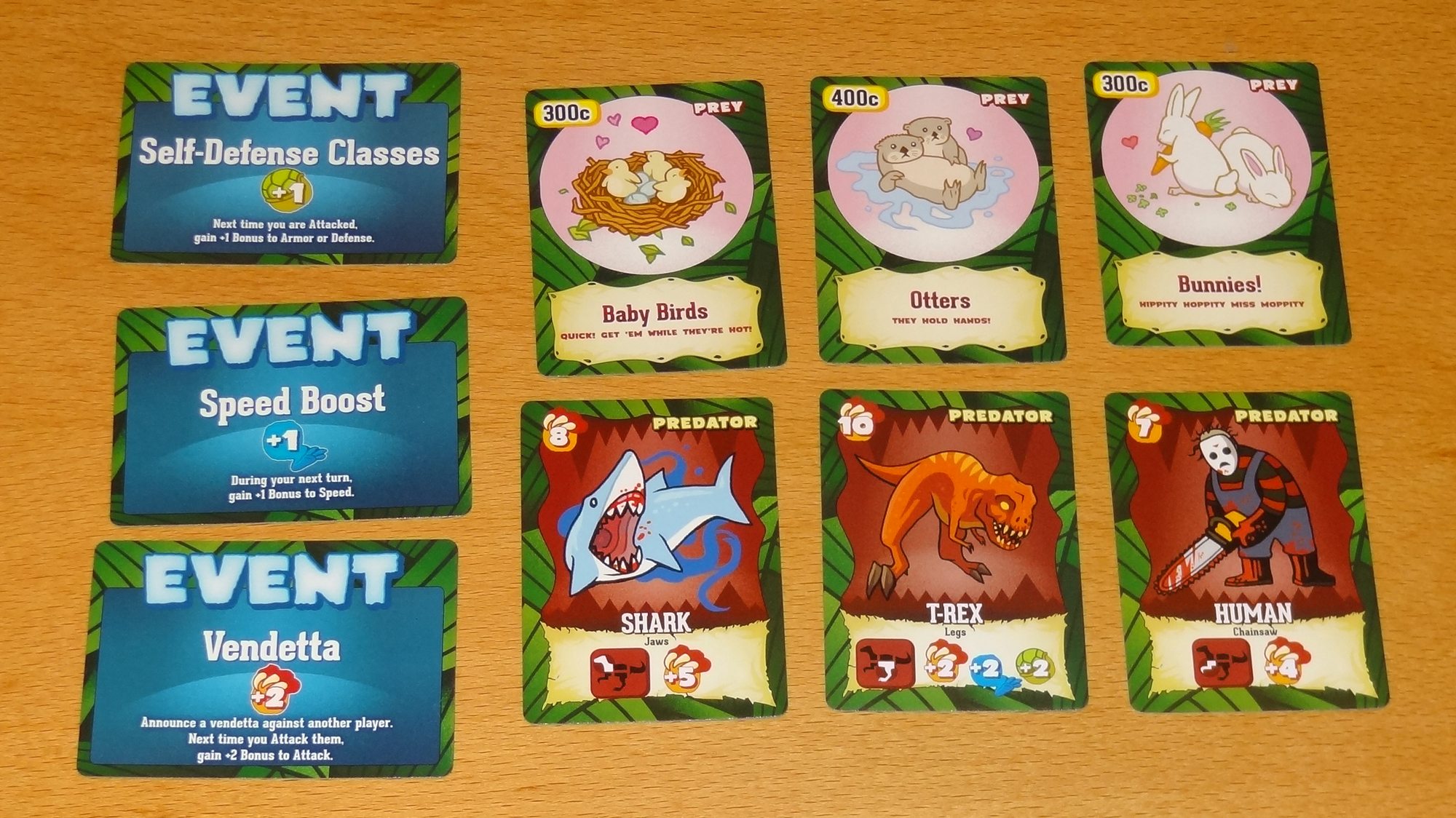
Hunt: draw a number of Jungle cards equal to your speed. Your base speed is 3, but body parts may speed you up or slow you down. Most of the jungle cards are prey, which provide calories. Some are events, which can affect your stats or have other effects. Finally, there are predators, which you’ll have to fight or flee from. If your total attack or total defense equals the predator’s attack value, then you fend them off and nothing happens. If it’s lower, then you have to run away, at a cost of 200 calories. If it’s higher, then you defeat the predator and you gain the bonus shown at the bottom of the card—some of the predators give you body parts that you can then equip.
Eat: After hunting, you have to eat. Each body part that’s equipped to your raptor has a calorie cost (except for the predator body parts, which are free). You’ll have to eat enough calories to pay for the body parts. You’ll also have to pay for any fleeing from predators you did. If you’re short on calories, then first you’ll eat any eggs you have, for 200 calories apiece. Still not enough? Then you start to eat your own body parts, for their listed calorie count. Any calories you have left can be used in the next phase.

Act: You may spend 500 calories to reproduce, which lets you take an egg token and put it in your Nursery. These eggs are safe from attack until the beginning of your next turn. You may also mutate by spending 300 calories to draw a card from the Meat Locker deck. If there’s an open slot for the new body part, you must equip it. If that slot is already taken, you can decide which of the two to equip and which to digest (put in your stomach). Finally, you may attack one player—add up your total attack, compare it to their total defense. If your number is higher, then you may steal either a body part or an egg from the other player. Again, if you steal a body part and you have an open slot for it, you must equip it.
Digest: If you have any leftover body parts or prey, you may store up to four cards in your stomach. (Note: you don’t get any change for partially-used cards, so if you use 300 calories from a 400-calorie Otter, you have to discard it.)
The game ends after all the Climate cards are used, or at the end of the round when the population pool runs out. (If there are no eggs left in the population pool, you can still reproduce and take more egg tokens from the box, but the pool indicates that the game is ending.)
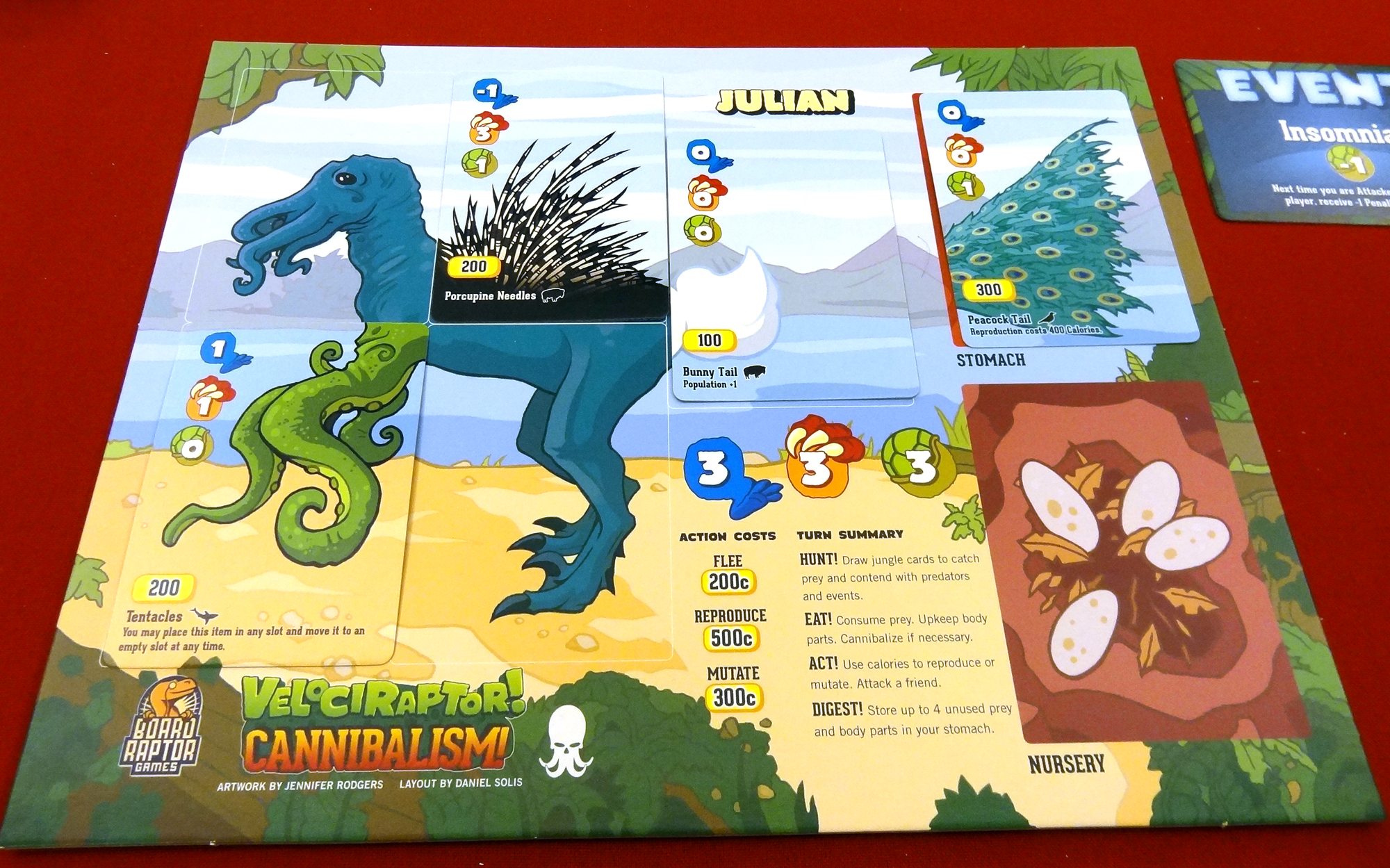
The Verdict
There are a number of games that involve piecing together bizarre animals: Creatures was one from a few years ago, and Evolve is on Kickstarter now. The appeal of mix-and-match images doesn’t go away when you get older, I think, and the artwork on the body parts just lines up so well, which makes it even better. Even the backgrounds on the cards line up with the background of the player mat. (The exception is the predator body parts, which are kind of disappointing when you equip those because it’s just a picture of the predator, not the relevant body part).
The gameplay itself is pretty easy to learn and straightforward: flip cards, take your food, fight predators, and then mutate and make eggs. For the most part, the cards are easy to understand and you won’t have to refer to the rulebook for much. The player mats have a nice turn summary and the costs of actions—the only thing that isn’t listed is the calorie value of eating an egg (200), which I had to look up in the rulebook the first time I played.

The humor in the game is fantastic, from the types of Climate events to the predators that will attack you. I love the fact that most of the food is adorable, if not actually from the Cretaceous Period. Adding in the Mythos expansion can make it harder (tougher predators), but also adds a good helping of silliness.
The downside is that the game can be very luck-dependent. When you go to the Jungle, you may end up drawing a bunch of predators each time, while your opponents are loading up on prey. That means you spend calories running away, so then you don’t have calories left to mutate, so you can’t improve your attack and defense, leaving you vulnerable to predators (or your opponents) for the next round.
There’s a slight catch-up mechanic in the fact that having a lot of body parts means that you need to consume a lot of calories in order to maintain them, but if you have high stats, then you’ll probably be able to draw a lot of Jungle cards and defeat any predators you encounter, so you’re still at an advantage.
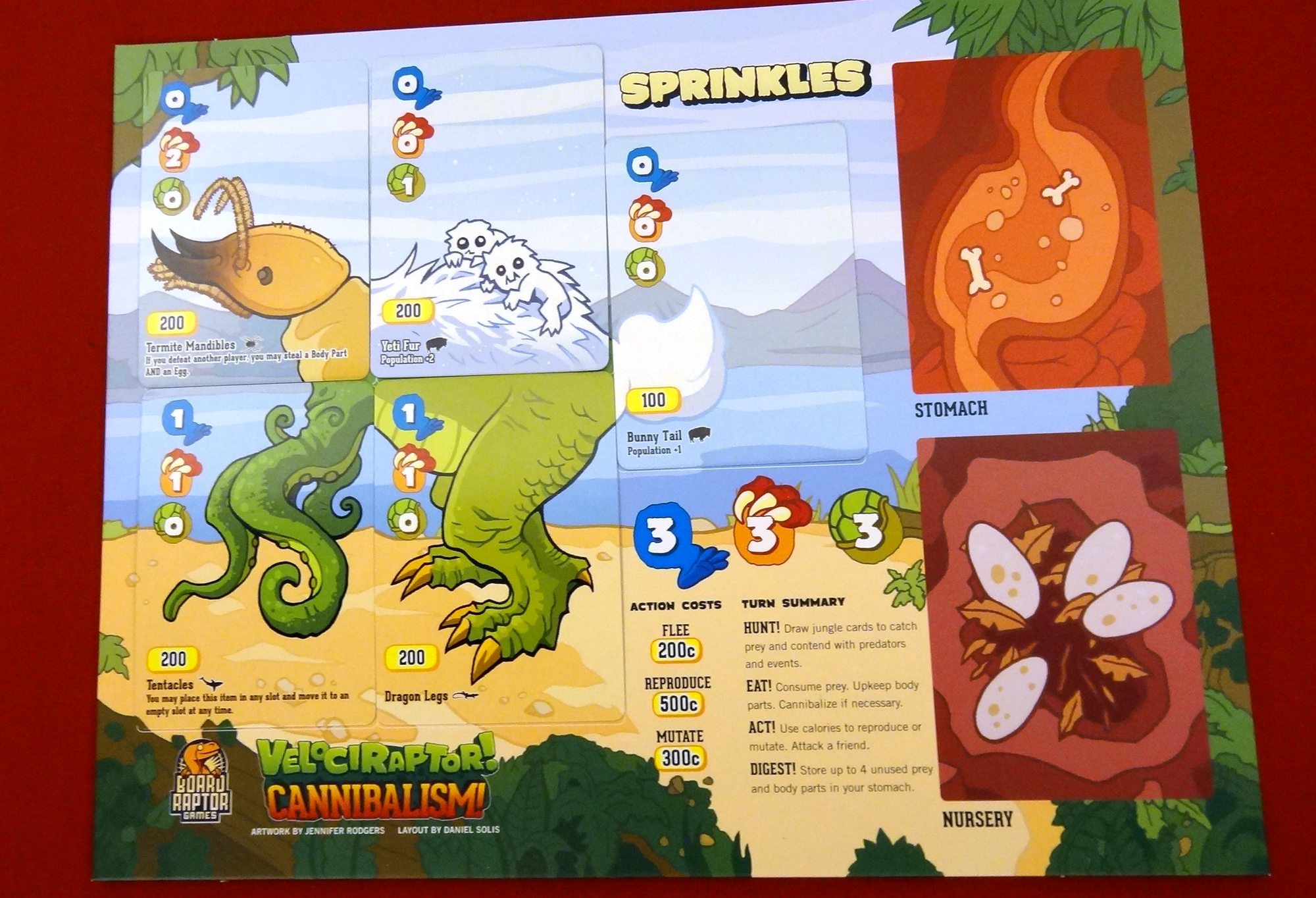
When you do have enough calories, you do get to make some interesting choices: mutate for the chance at better stats (but a higher calorie cost), or reproduce so you can have eggs to win the game? If you spend all your calories to make eggs but don’t get better defense, then you might end up losing those eggs to another player.
That’s when you have enough calories, though. I’ve also seen some players have a string of bad luck, where each round they just don’t have enough calories to even make those choices, and that’s not quite as fun.
Hey, if you’re playing a game called Velociraptor! Cannibalism! then you should probably expect that it might not be a deeply strategic experience. But it should at least be entertaining, and that’s where it’s important to know your players. If everyone at the table can admire somebody else’s crazy Frankenstein raptor and laugh even though their own player mat is blank, then you’ve got a good group for the game. However, if somebody is going to be put out by the fact that they never got a good card draw, then you might want to play something else.
Overall, I’ve had some fun playing Velociraptor! Cannibalism! and my kids thought it was hilarious, but as a game night host I’ve also felt somewhat bad for introducing a game that left a player without a hope of winning. I think it’s a better one for more casual gamers, or as a funny filler in between more serious stuff. For the right group, though, it can be really great, and I always love seeing new combinations of body parts.
For more information or to order a copy of the game, visit Board Raptor Games.
Disclosure: GeekDad received a review copy of this game.
